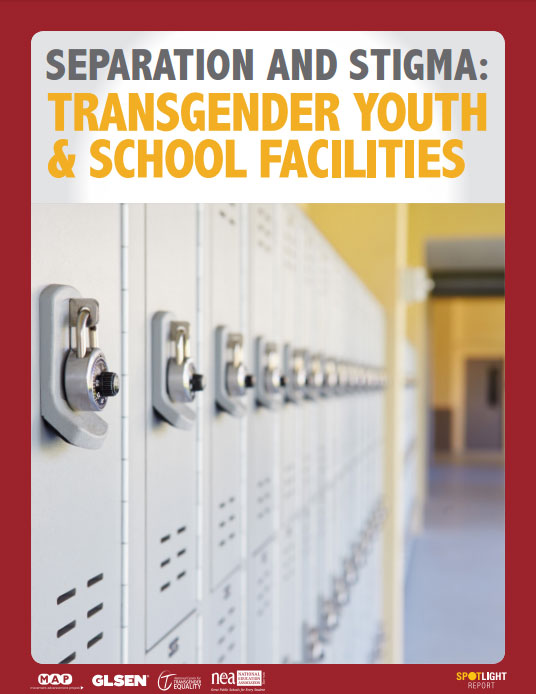The Bottom Line
There are an estimated 150,000 transgender youth between the ages of 13 and 17 in America. GLSEN’s 2015 National School Climate Survey found that 75% of transgender students felt unsafe at school because of their gender expression, 50% report being unable to use the name or pronoun that matches their identity and 70% report avoiding bathrooms. Excluding transgender students from school facilities that match their gender is humiliating, discriminatory, and adds to the bullying and mistreatment that far too many transgender students already face. As this report details, this issue is not just about bathrooms, but about whether or not transgender students will be included in our public education system. If transgender students cannot safely access a bathroom, they cannot safely attend school.
Local school districts across the country, as well as 13 states and the District of Columbia, have proven they can successfully implement laws and policies protecting transgender students from discrimination while still meeting the needs of all students. Having inclusive school policies does nothing to diminish schools’ legal obligation to ensure safe school education facilities and to act if a student behaves inappropriately or tries to invade someone’s privacy.
Despite the success of inclusive policies, the federal government has signaled that transgender students cannot count on their support or protection. In 2014, the Obama administration issued official guidance clarifying that transgender students are protected from discrimination based on Title IX’s prohibition on sex discrimination. The current administration recently rescinded that guidance, leaving transgender students at higher risk for harassment and violence. As a result, the U.S. Supreme Court withdrew its decision to hear arguments in the case of Gavin Grimm, in which the Court would have considered whether Title IX’s prohibition on sex discrimination protects transgender students. Without clear federal guidance, seventeen states have introduced legislation designed to ensure transgender students are relegated to facilities that align with the sex on their birth certificate, rather than their gender identity.
Separation and Stigma: Transgender Youth & School FacilitiesDownload
Click here to read an open letter from MAP, GLSEN, NCTE and the NEA to U.S. Secretary of Education Betsy DeVos urging her to consider the findings in our report.
Recommended citation:
Movement Advancement Project and GLSEN. April 2017.
Separation and Stigma: Transgender Youth & School Facilities.
https://www.lgbtmap.org/policy-and-issue-analysis/transgender-youth-school (date of access).


